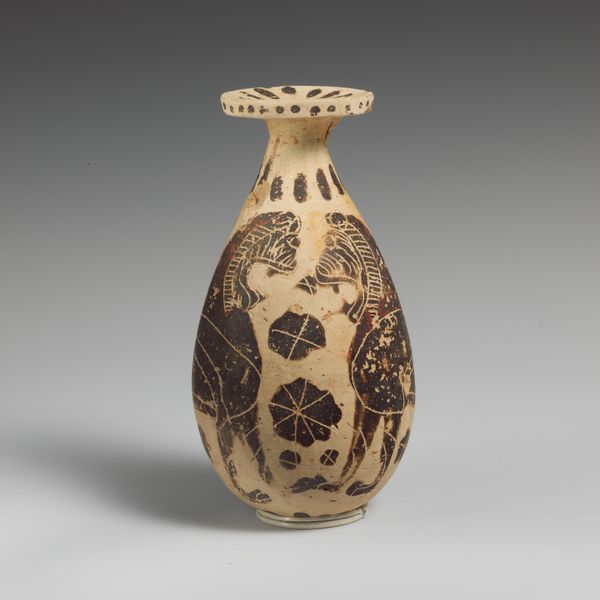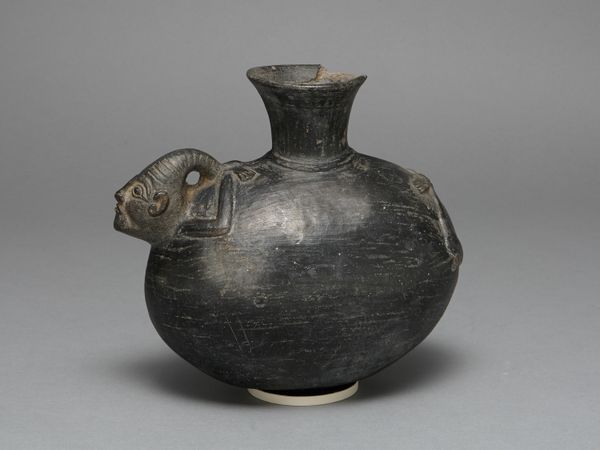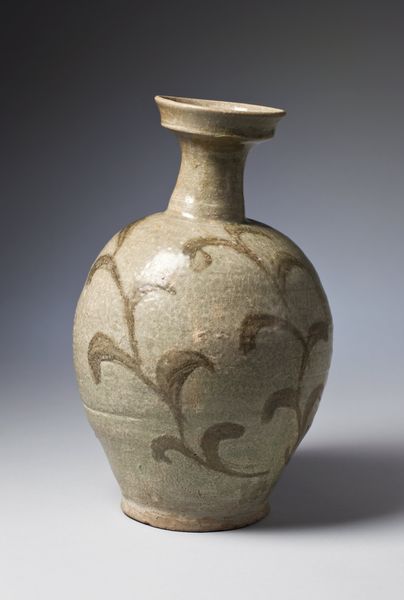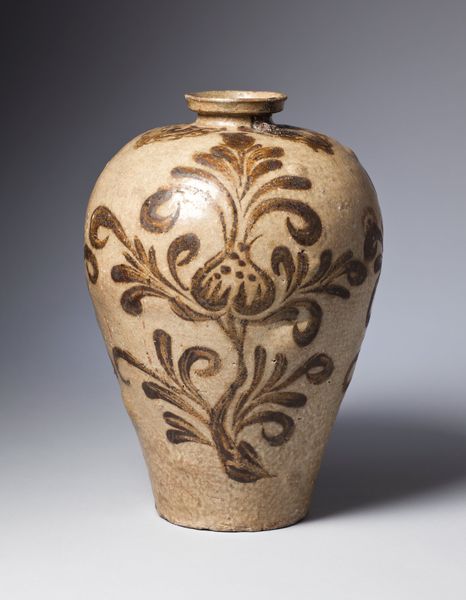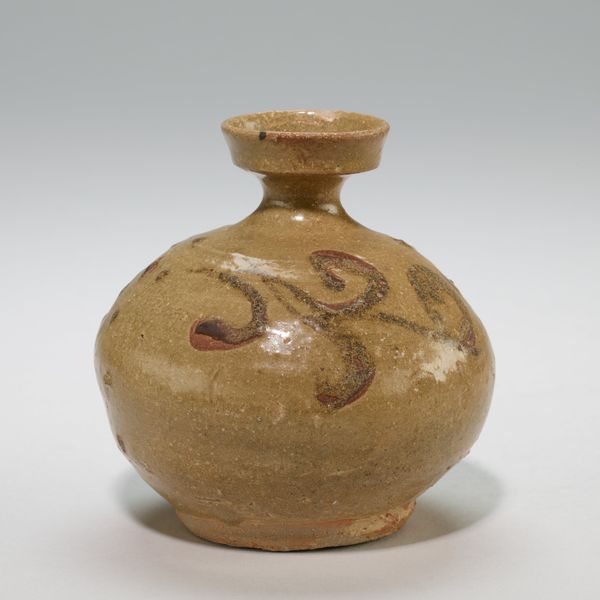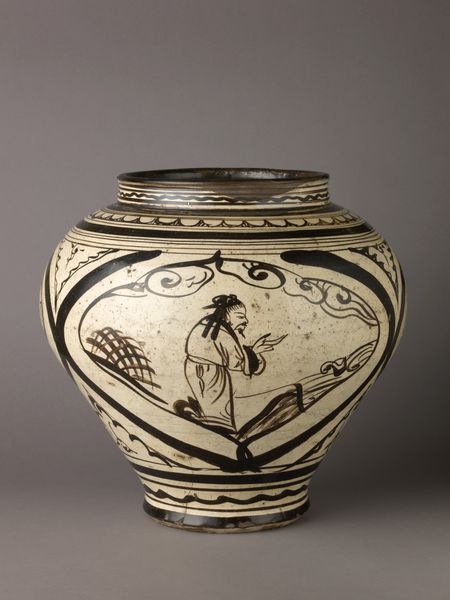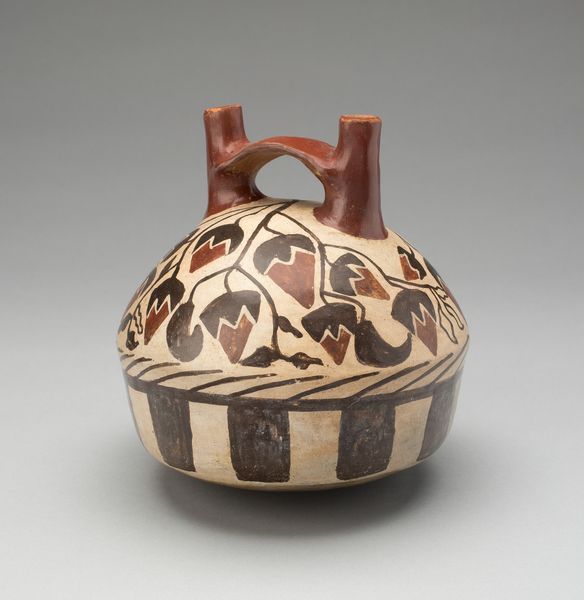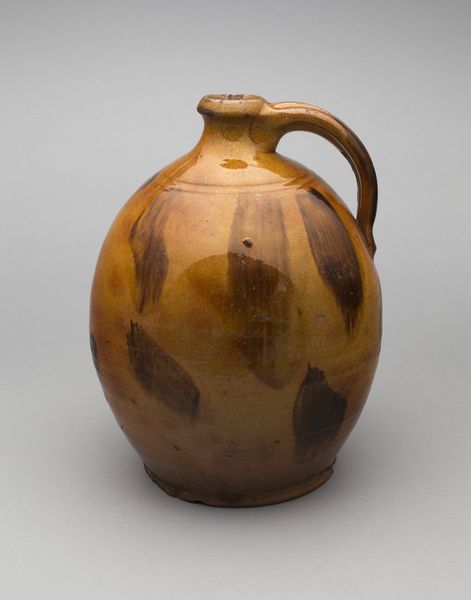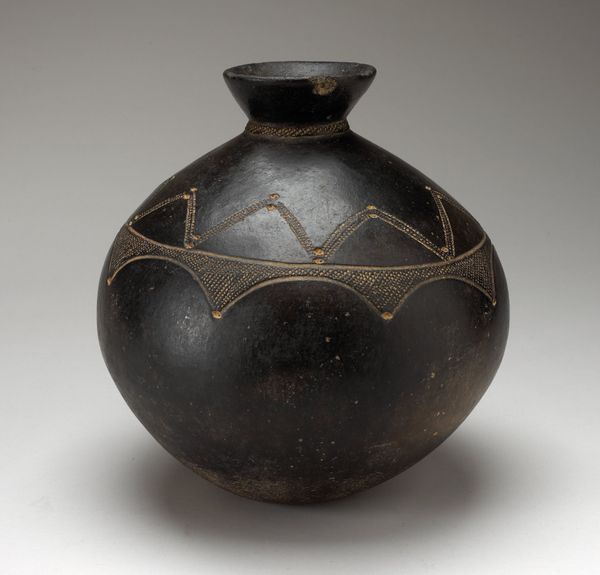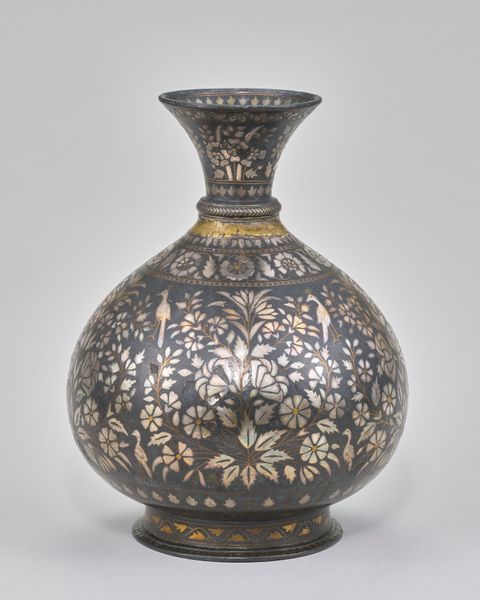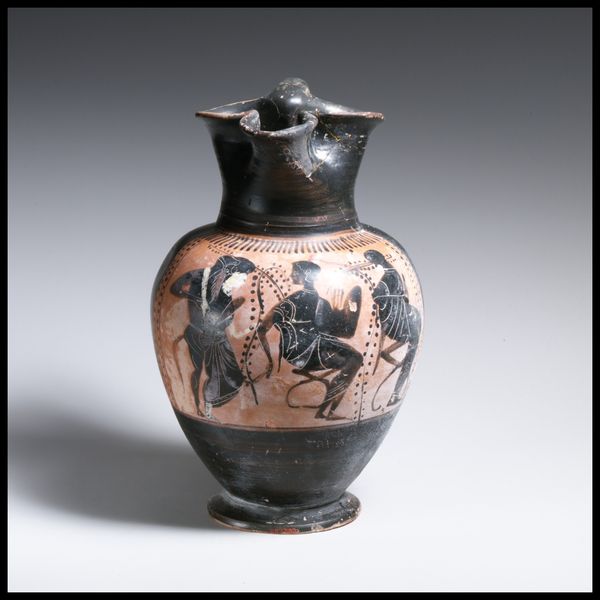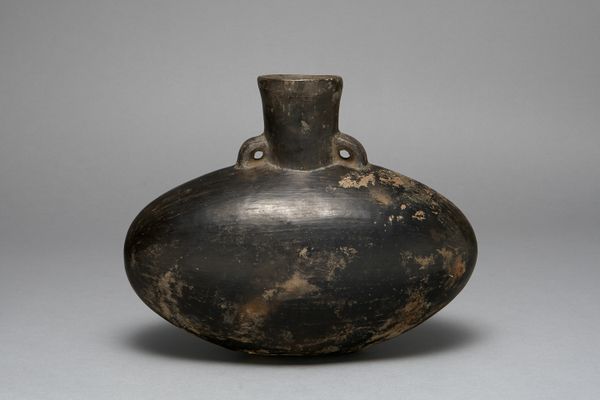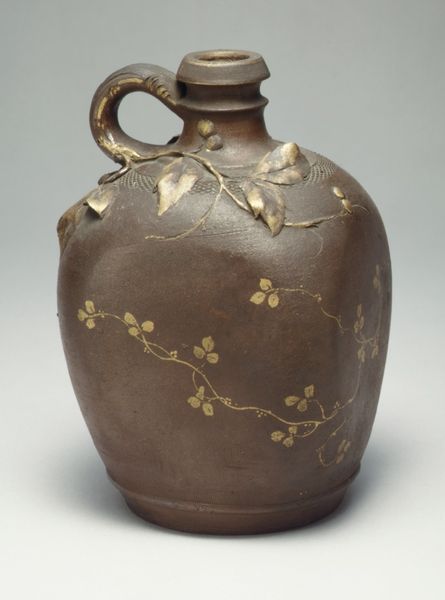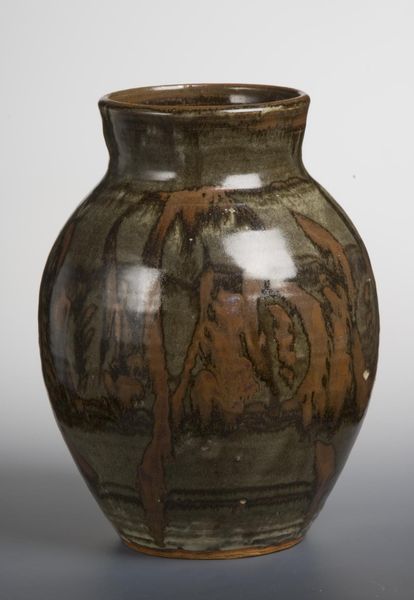
ceramic, earthenware
#
organic
#
asian-art
#
ceramic
#
earthenware
#
ceramic
#
line
#
earthenware
Dimensions: 7 3/4 x 8 3/8 x 5 9/16 in. (19.69 x 21.27 x 14.13 cm)
Copyright: Public Domain
Editor: This is an earthenware bottle from around the 15th century, titled "Bottle in the Shape of a Bale of Rice." It’s currently held at the Minneapolis Institute of Art. It’s surprisingly tactile; you can almost feel the weight and texture of the rice it imitates. What symbolic significance do you think rice might have had during this period? Curator: Rice, more than just sustenance, represents cultural memory and continuity. In many Asian cultures, particularly during this time, rice embodies prosperity, fertility, and the very cycle of life. The bottle, therefore, becomes a vessel not only for liquid but also for these profound values. Notice how the stylized painting enhances this impression; they're less about botanical accuracy, more about conveying abundance. Do you see how the rounded form evokes both the fullness of a rice bale and, perhaps, the pregnant belly? Editor: I hadn’t thought about that visual connection. So, the bottle serves almost as a charm, imbuing everyday life with these values. Curator: Exactly. The craftsman subtly elevates the mundane to the sacred through readily understandable symbols. The dark brown painted motifs and the form work together; consider the repetition of similar symbols in later visual cultures – does it elicit a familiar cultural memory? Editor: It does make me think of how repeated patterns or symbols in other art forms reinforce societal values over time. The visual language is definitely communicating more than just the object's purpose. I guess it’s true what they say – everything speaks, especially art. Curator: Indeed. And by decoding this language, we gain deeper insight into the values and beliefs of past generations.
Comments
minneapolisinstituteofart over 1 year ago
⋮
In the early Joseon dynasty, Korean potters produced a type of ceramic known as Buncheong (literally translated as “powder-green”), so named because the glaze applied to these vessels was greenish in color. Decoration of Buncheong wares took many forms, including stamped and inlaid designs, as well as lively patterns carved in light slip applied to the surface. This vessel takes the shape of a bale of rice, which is a common sight in all East Asian countries during rice-harvesting season. Bottles such as this one were first thrown on the potter’s wheel, then turned on their sides for the application of the spout and foot
Join the conversation
Join millions of artists and users on Artera today and experience the ultimate creative platform.
